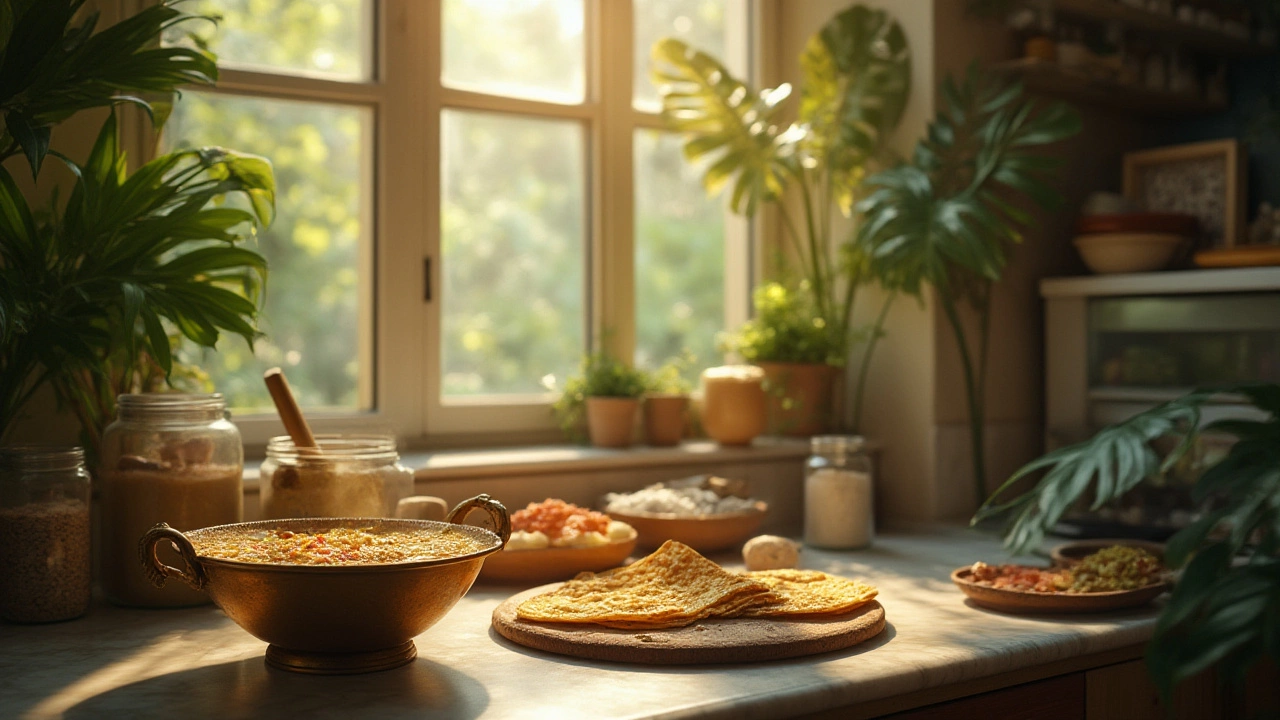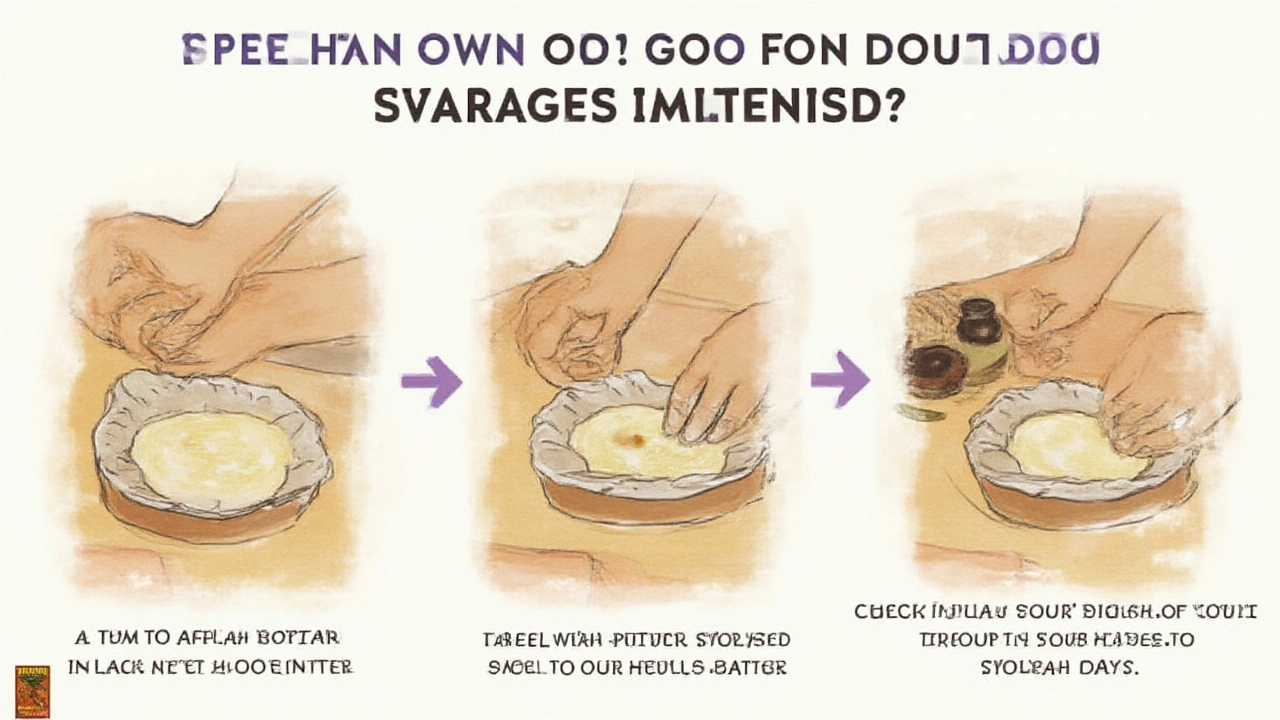How Long Does Homemade Dosa Batter Last in the Fridge: Freshness, Spoilage, and Storage Tips

Every South Indian or dosa fan has faced the same dilemma: you whip up a big batch of dosa batter, thinking you’ll be flipping golden beauties all week. Then a couple days pass. Is it still good? You open the lid, sniff, poke, analyze, replay yesterday’s dosa memory in your head. Is it still safe to use? Or should you toss it?
What Makes Dosa Batter Go Bad?
You might be surprised how quickly homemade dosa batter can change its character. The primary ingredients—rice and urad dal—aren’t going bad on their own. The real culprit? Fermentation, plus bacteria and wild yeasts that thrive at room temperature. Once you’ve ground the soaked rice and dal, that paste is a wild playground for microbes, especially during fermentation. You actually want some of this action. A good dosa batter needs that sour tang, typically after fermenting for 8 to 20 hours depending on the weather. In humid places like Chennai in July, fermentation might take half a day. In dry winter? It can take over a day.
But let it ferment too long, or store it wrong, and a few things start to happen: funky smells, sticky textures, and a layer of pinkish slime. Why? Because as soon as you finish fermenting, all the leftover sugars and starches are still vulnerable. If it sits out for another day, unwanted bacteria kick in. This bacteria party can spoil your batter in just 48 hours if left at room temp.
Temperature matters more than you think. At room temperature (say, about 28°C/82°F or higher), the batter will sour and spoil rapidly—sometimes developing a stiff crust or a gooey layer. In a properly chilled fridge (4°C/39°F), fermentation slows way down, but doesn’t totally stop. Your batter keeps maturing, which is why even in the fridge, it can go from fluffy to sour or even watery after several days.
Fun fact: Experienced cooks can often tell batter freshness just by the bubbles on top. Strong, healthy fermentation gives you even, small bubbles. An old or dying batter loses them, or grows massive, uneven ones. So, trust your eyes—and nose—more than your calendar.
How Long Can You Store Homemade Dosa Batter?
This is what everyone wants to know. Once you’ve made that perfect batter and let it ferment, stash it in the fridge if you won’t cook right away. Here’s where most of us get stuck. Some swear they get 10 days out of a batch, others say theirs is sour after three. Who’s right?
Research from food safety experts in India and user experiences confirm: in a standard home fridge, dosa batter shelf life is about 3 to 6 days max. Here’s the breakdown you can count on:
| Storage Method | Typical Shelf Life |
|---|---|
| At Room Temp (28°C/82°F) | 12–24 hours post-fermentation |
| In Fridge (4°C/39°F) | 3–6 days |
| In Freezer (<-18°C/0°F) | Up to 1 month |
A lot depends on your fridge temp and how well you handle the batter. If you use a clean spoon every time, seal the jar airtight, and refrigerate right after fermenting, you’ll get nearly a week—sometimes even 7 days if your kitchen and hands are scrupulously clean. But, add chopped onions or spices before storing, or scoop some out with a dirty spoon, and you’ll see the shelf life drop, often to 3 days or less.
One old trick? Transfer a portion you won’t use right away into a new, sterile container. Less exposure equals slower spoilage. If you plan to eat dosa all week, consider breaking up the batch on day one: keep only what you need for the next few days in the fridge and freeze the rest.

Spotting Spoilage: When is Dosa Batter Unsafe?
Nothing ruins a craving like pouring out your long-fermented batter and realizing it’s gone bad. The signs are surprisingly clear if you know what to look for. Most folks rely on smell first—if your batter smells strongly sour (like old cheese or damp socks), that’s the first red flag. But what else can you spot?
Here’s a quick checklist for dosa batter gone bad:
- Odd Smell: A faint tang is fine, but sharp, stinky, or ammonia-like odors mean trouble.
- Strange Color: Any pink, orange, green, or gray patches (even tiny ones) mean mold or unwanted bacteria. Don’t scrape it off—toss the whole thing.
- Texture Changes: Good batter stays fluffy and fluid. Bad batter may develop a layer of goo, sticky threads, or become watery and flat.
- Fizzy or Foamy Surface: A bubble or two is great, but if you see heaps of foam—even after it’s been refrigerated for days—that’s a sign fermentation went overboard.
- Bitterness: Taste a tiny bit. Overly bitter or metallic flavors mean spoilage, not a fun tang.
The biggest risk is not just taste—it’s food safety. Bad batter may harbor pathogens, especially if it was left out too long, handled carelessly, or stored dirty. Sometimes, over-fermentation can lead to the growth of wild yeast or certain bacteria producing mild toxins. Better to lose some batter than ruin your gut.
Pro tip? Keep the container’s interior dry. If you see condensation or standing water, the batter will spoil faster. And never put warming batter (straight from fermentation in sunlight) straight into the fridge—let it come to room temp first, then seal and chill.
Best Ways to Store Dosa Batter
Airtight storage is your dosa’s best friend. Use glass or food-grade plastic containers with snug lids. Avoid old takeout boxes with wobbly seals—they’re magnets for fridge funk. Every time you scoop some batter, use a new, clean spoon or ladle. This tiny detail can make a few days’ difference in how long it stays fresh.
Temperature is a big deal. The bottom shelf at the back of your fridge is the coldest spot—sticking the batter there slows fermentation. If you have a fridge with glass shelves instead of wire racks, store on the middle shelf to protect from temperature swings. And if your fridge is set too warm (above 5°C/41°F), your batter will sour, even if sealed perfectly.
Thinking of freezing to extend shelf life? It works surprisingly well. Put freshly fermented batter in smaller portions in freezer-safe containers. When you’re ready for dosa, thaw slowly in the fridge overnight, not on the counter. Batter frozen for more than a month may lose some rise and taste a little flat, but it’s still safe. If you’re picky about delicate flavors, don’t keep frozen batter too long.
Curious about the science? It’s not just about preserving rice and dal. Freezing slows down, but doesn’t totally kill, the fermentation bacteria. That means your thawed batter will keep fermenting a bit, though more sluggishly. Some cooks actually prefer the faint tanginess of frozen-thawed batter for crispy dosas.
Crowd wisdom suggests putting a thin layer of water or oil on top before sealing. The water method is traditional—just pour a spoonful of boiled, cooled water over the batter and don’t mix until you’re ready to use. Oil (preferably a neutral one) works similarly, reducing air exposure and keeping the surface soft.
Quick-tip checklist for longest batter life:
- Refrigerate as soon as fermentation is done
- Use clean utensils every single time
- Store in airtight glass or food-safe plastic
- Freeze batter you won’t use in 3 days
- Avoid adding onions, chilis, or spices before storage—mix them just before making dosas
- Label containers with the date—so you’re not playing fridge roulette

Making the Most of Old Batter: Tricks, Ideas, and Fixes
So your batter’s getting a bit old—still edible but lost its punch? There’s actually a bunch you can do. First, if it’s just more sour than you want, dilute it with a little fresh water or add a scoop of fresh rice flour and stir well. Some people add a small pinch of baking soda (or eno fruit salt) to give the batter extra lift for super-crisp dosas.
If it’s really too sour or thin, don’t throw it away just yet. Old dosa batter makes a mean batch of uthappam—those thick, fluffy pancakes loaded with onions, chilies, or tomatoes. Its extra tangy kick works well with these. Another win: use it for paniyarams (chef-style savory dumplings). The batter’s sour flavor with a spicy chutney can actually taste better than yesterday’s dosa.
Old batter isn’t great for classic, paper-thin dosas but can totally rescue a weeknight dinner as idli, savory crepes, or as a base for Karnataka-style paddu. Just heat gently and cook thoroughly—old batter burns quicker due to its acidity, so go easy on the flame. If there’s any sign of mold or off-smell, though, don’t risk it—compost or toss.
Make use of leftovers and freeze single-portion snacks using your batter. Mini dosas and idlis travel well in lunchboxes. Some creative home cooks even use old batter (not spoiled!) to thicken gravies or make sourdough-style flatbreads. That slightly sour tang is a secret weapon for flavor in unexpected places—try it once and see.
If you know you won’t finish the batch, invite friends over for a spontaneous dosa night. Nothing beats hot dosas fresh off the tawa, and your batter will always taste best when shared, not forgotten at the back of a crowded fridge.